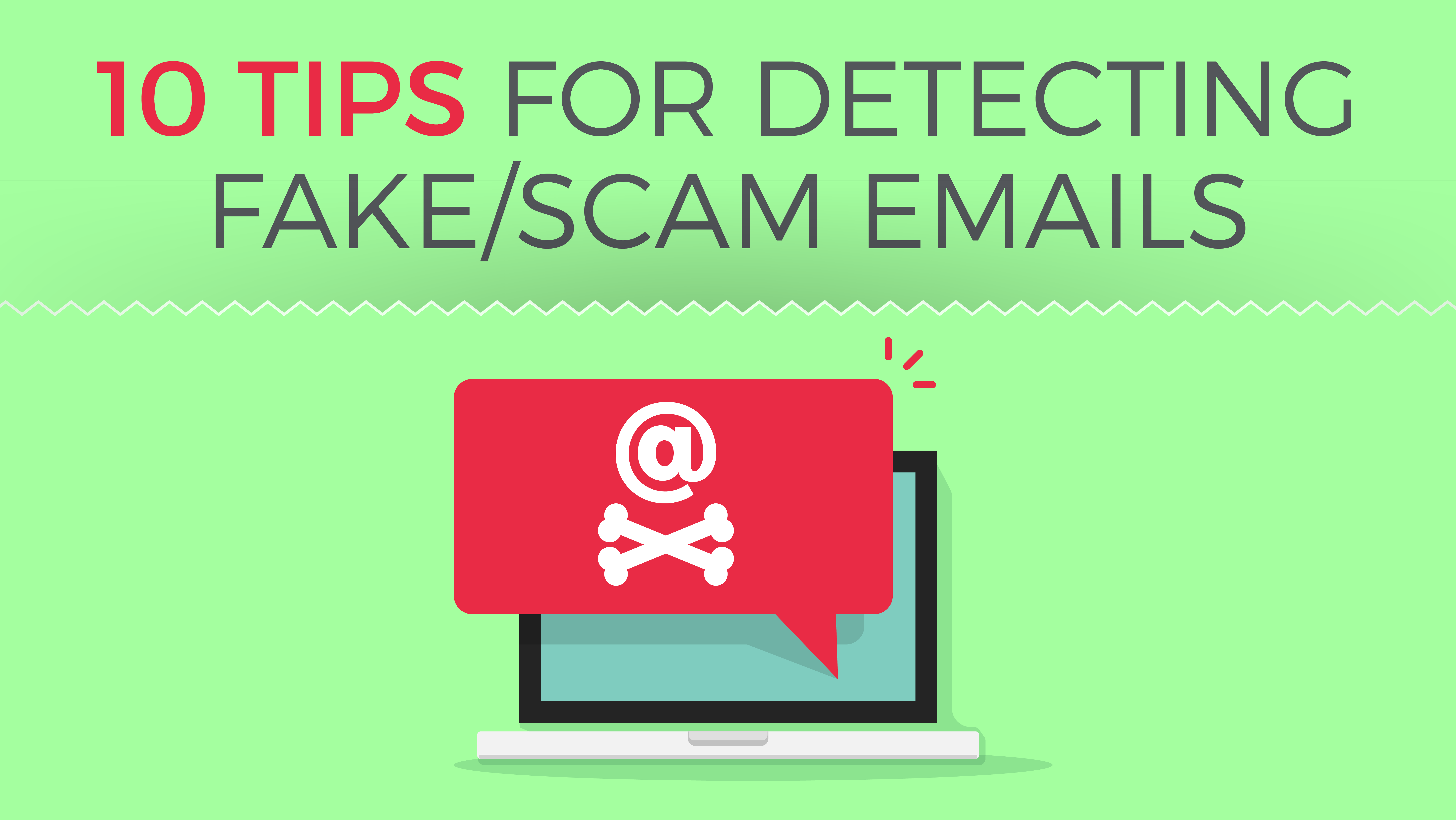How To
(Hi-Res Version) How to Detect Fake/Scam Emails and Avoid Phishing Attacks

- November 6, 2017
- Updated: July 2, 2025 at 6:44 AM

Do you know if that email is really from who it says it is from? It might not be and if it isn’t you could be in a whole lot of trouble, from damaging malware to terrifying ransomware. Cyber-criminals are constantly pretending to be people we know or even companies and banks that we associate with so that they can phish for our data or access to our machines. Follow these tips to make sure they don’t cath you out…
Click Here to share on Facebook and protect your friends against Fake/Scam Emails.
Click Here to share on Twitter and protect your followers against Fake/Scam Emails.
How to detect and avoid fake or scam emails

1. Don’t just trust the name. Always check the domain!
If, for example, you receive an email that you think is from your bank but that comes from an email address like xxxx@secure.com and not xxxx@yourbank.com it is a scam email. You should look at the domain name after the @ rather than the name before it.
2. Scam URLs
Sometimes a scam email will invite you to click on a misleading URL. Before you click on any links in emails you’re unsure of hover the cursor over the link. The hypertext will show the address of the link and if it has nothing to do with the company represented then you know it is a scam.
3. Spelling mistakes
Real companies take their spelling seriously so if you see any spelling mistakes you should think seriously before clicking on any links.
4. The message asks for personal information
The alarms should start ringing if you get an email that asks you for any personal information. Particularly bank account details, passwords or credit card numbers.
5. But, I haven’t done anything
If you get an email telling you that you’ve won a contest you don’t remember entering then you’re likely looking at a scam. Be weary of any email that offers congratulations for something you haven’t done.
6. The threat
A common tactic of scam emails is to try and make you nervous so that you won’t be thinking clearly. Think twice if you get an email saying, “Beware, you’re account will be blocked in 3 days if you don’t take this action” or other threats to that effect.
7. Don’t click on attachments
If scam emails have attachments they will contain malware. Until you know that the email is safe do not click on any attachments.
8. The standard greeting
These days big companies are able to send emails with personalized greetings including your name and surname. If the email has a more general greeting like “Dear sir” it was likely sent by somebody that doesn’t have the resources of a legitimate company at the their fingertips.
9. Absence of contacts
It is normal for legitimate emails to include a range of contact details. A lack of legitimate contact details should set alarm bells ringing.
10. Trust your instinct
It is possible that the URL looks trustworthy, the email doesn’t contain spelling mistakes etc. but something still doesn’t feel right. In these cases, you should call the company in question or send them an email to verify that the email you’ve received is legitimate.
Follow me on Twitter: @PatrickDevaney_
Patrick Devaney is a news reporter for Softonic, keeping readers up to date on everything affecting their favorite apps and programs. His beat includes social media apps and sites like Facebook, Instagram, Reddit, Twitter, YouTube, and Snapchat. Patrick also covers antivirus and security issues, web browsers, the full Google suite of apps and programs, and operating systems like Windows, iOS, and Android.
Latest from Patrick Devaney
You may also like
 News
NewsHideo Kojima is clear: he wouldn't be here if it weren't for Super Mario Bros
Read more
 News
NewsAvatar: Fire and Ash collects 345 million in its opening weekend, but falls far short of previous installments
Read more
 News
NewsJames Cameron claims that Avatar has a lot of future ahead for one reason: it tries to tell a story about the present
Read more
 News
NewsThe director of Expedition 33 is blunt: "it's not about following processes, but about making a game that you want to play"
Read more
 News
NewsThe creators of this year's most unique shooter announce a grim and sinister parkour game
Read more
 News
NewsRainbow Six Siege X receives the biggest update in its history
Read more